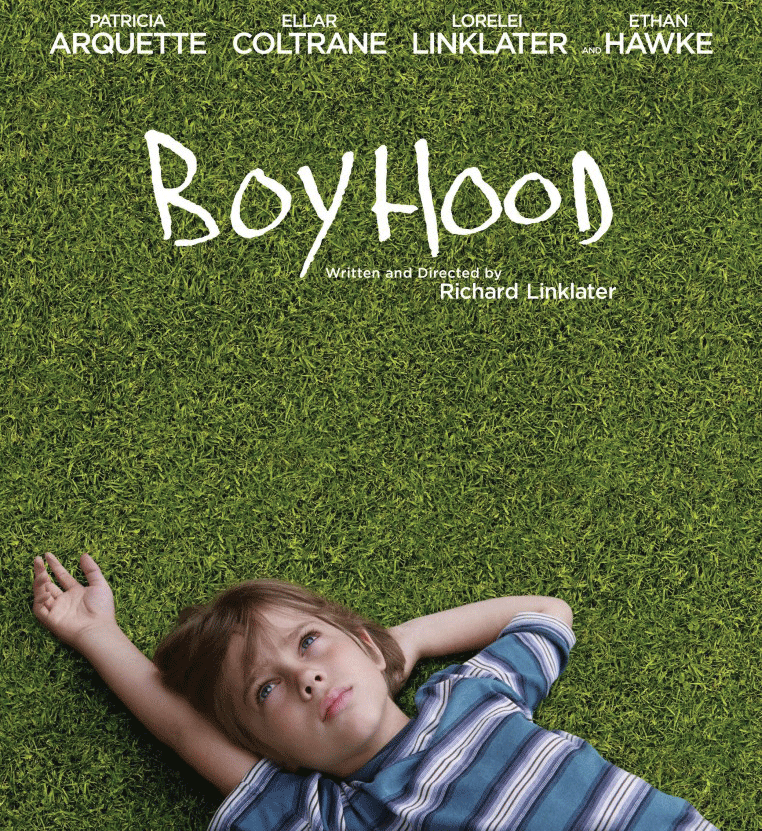The Film “Boyhood” Follows Actors For Eleven Years
The years from 2002 to 2013 saw major changes in technology, foreign affairs and pop culture. But for most of us, these years were ones of transition from childhood to adulthood, full of highs and lows, firsts and maybe lasts. With each year, we grow a little bit older and hopefully wiser. We gain height, change styles and discover who we really are. It’s a painful process that never truly ends. However, there is a beauty in the pre-adolescent and adolescent years that has never been accurately captured through any artistic medium, until the release of the film “Boyhood,” directed by Richard Linklater.
“Boyhood” is unique, following the same set of actors for 11 years straight. The main character, Mason Evans Jr. (Ellar Coltrane) and his on-screen sister Samantha (Lorelai Linklater) literally grow up on screen. Their transition from childhood to adulthood is seamless. Mason is first introduced as a curious kid, lying on the ground as he looks into the sky while “Yellow” by Coldplay plays in the background. Despite this moment of reflection, he enjoys most of the typical activities boys do: biking with friends, playing video games and fighting with his sister.
While his life appears to be relatively carefree, Mason’s single mother Olivia (Patricia Arquette) is intent on giving Mason and Samantha a better life. She moves the family to Houston, so she can get a college degree and a better paying job. She remarries, gets divorced then remarries again.
Meanwhile, Mason’s father Mason Sr. (Ethan Hawke) remains in their lives, stopping by every so often to take the kids out and teach them a little about life. After Mason expresses his wish for bowling with bumpers around the age of seven, Mason Sr. responds with, “Life doesn’t give you bumpers.”
Years later, he’s there to answer Mason’s questions about girls. Mason Sr. does some growing of his own, best exemplified by the replacement of his beloved 1968 GTO with a minivan.
Mason morphs from a small boy interested in collecting arrowheads to a teenager with a bad haircut who isn’t concerned about following the crowd. He gets piercings, he leaves blue nail polish on his nails that some girl in his class painted, he raises philosophical questions about life at parties. His sister Samantha, originally an extroverted straight-A student who listened to Britney Spears, becomes a relatively quiet artist. But these changes feel natural.
In some ways, “Boyhood” is like a throwback to the past 11 years. As the years progress, so does pop culture. Mason’s family makes the move to Houston, Texas as “Soak up the Sun” by Cheryl Crow plays in the background. Towards the end, “Somebody That I Used to Know” by Gotye is the popular song. As Mason matures, so do his pastimes. His Game Boy Advance SP makes way for a Nintendo Wii, and his enthusiasm for Harry Potter is replaced by an interest in photography.
The plot of “Boyhood” might seem very standard and unimpressive, but the effect is the exact opposite. Linklater, in his signature style, injects life into his films. He is not one to emphasize big moments because life is made up of small everyday events. Conversations are fluid and mostly improvisational. Characters aren’t forced to fit into specific molds.
This approach to film has served Linklater well with films such as “Dazed and Confused” and the “Before Sunrise” series. The difference from those cult classics is that “Boyhood” takes place over the course of eleven years as opposed to 24 hours. Somehow, Linklater still manages to make eleven years of growing up captivating to watch.







